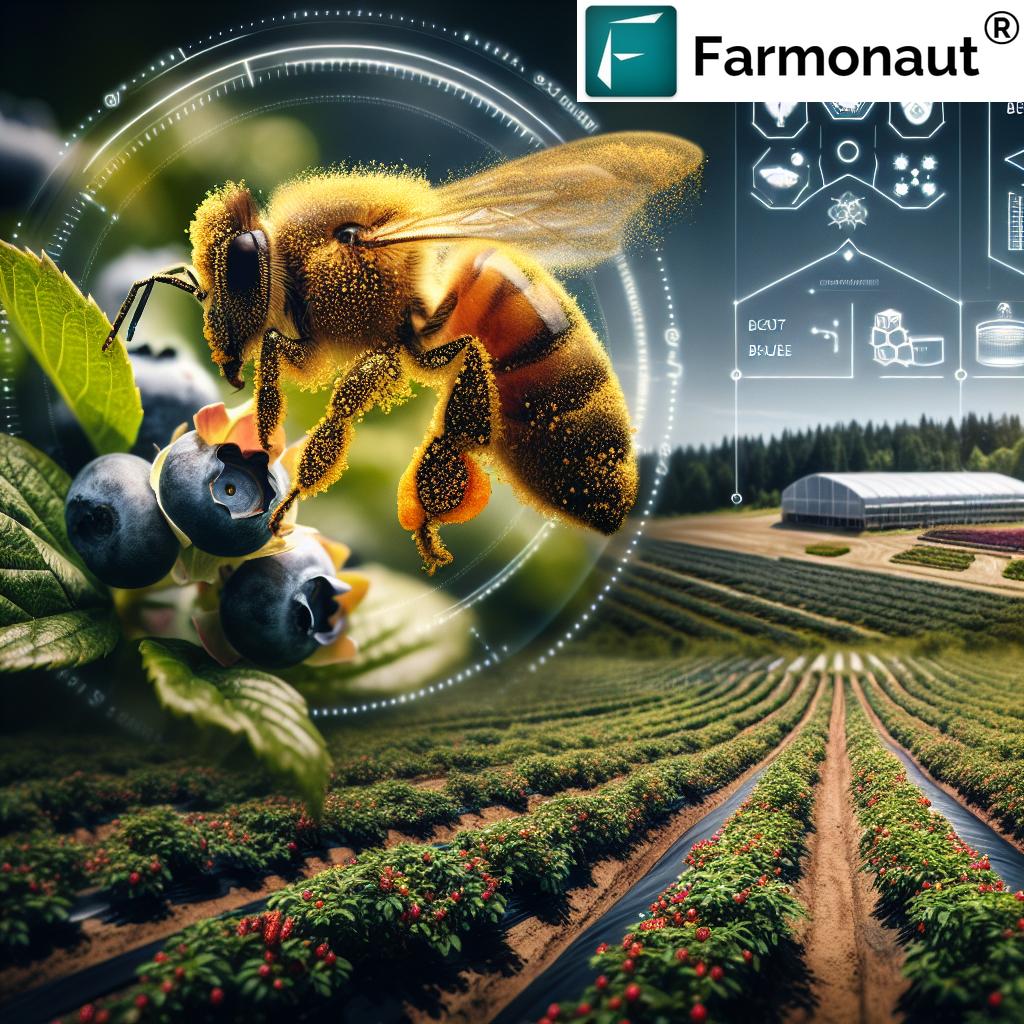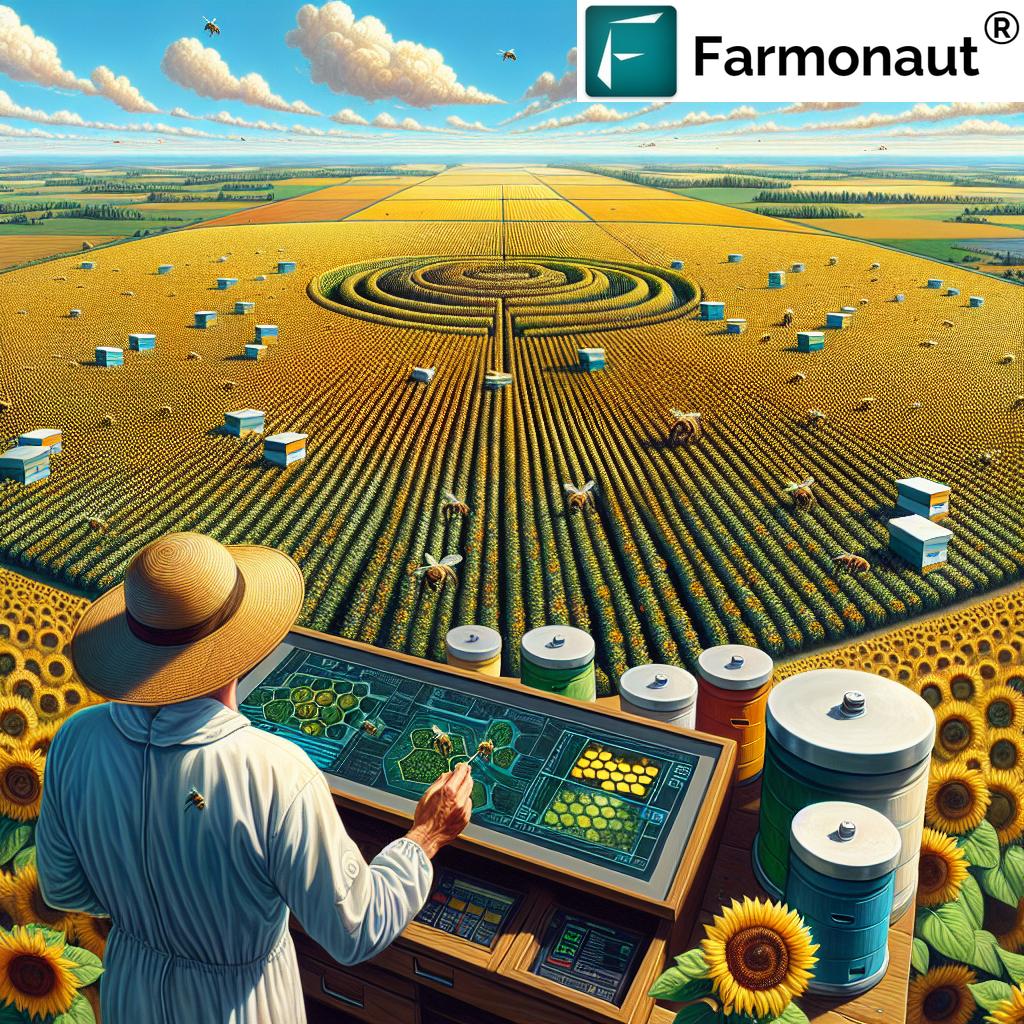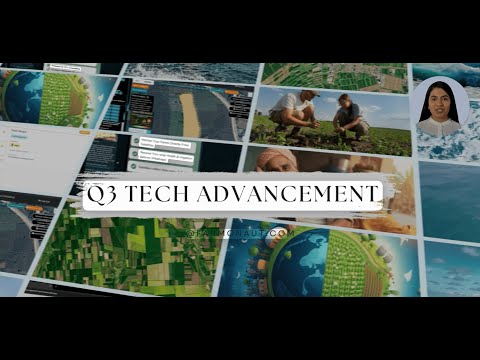Revolutionizing Agriculture: How Bee Vectoring Technology is Transforming Sustainable Crop Management in Canada

“Bee vectoring technology can increase crop yields by up to 30% while reducing chemical pesticide use by 95%”
In the ever-evolving landscape of agriculture, we’re witnessing a remarkable shift towards sustainable and innovative farming practices. At the forefront of this revolution is bee vectoring technology, a groundbreaking approach that’s transforming crop management, particularly in Canada. This blog post delves into the intricacies of this technology, its impact on sustainable agriculture, and how it’s reshaping the future of farming.
Understanding Bee Vectoring Technology
Bee vectoring technology represents a paradigm shift in how we approach crop protection and pollination. This innovative technique harnesses the natural behavior of bees to deliver targeted crop protection agents directly to plants. Here’s how it works:
- Natural Delivery System: Bees, primarily bumblebees, are used as vectors to carry and distribute organic pest control agents.
- Precision Application: As bees visit flowers for pollination, they simultaneously deposit minute amounts of biological control agents.
- Continuous Protection: This process occurs naturally throughout the flowering period, providing consistent crop protection.
The beauty of this system lies in its simplicity and effectiveness. By leveraging the bees’ natural foraging behavior, we can achieve sustainable crop pollination while simultaneously delivering targeted crop disease management solutions.
The Science Behind Bee Vectoring
At the heart of bee vectoring technology is a sophisticated understanding of both bee biology and plant pathology. The process involves:
- Formulation of Biological Control Agents: Scientists develop specially formulated powders containing beneficial microbes or other active ingredients.
- Integration with Hive Systems: These powders are placed in patented dispensers within bee hives.
- Natural Distribution: As bees exit the hive, they walk through the powder, which adheres to their bodies.
- Targeted Delivery: During pollination, the powder is transferred to the flowers, providing localized protection.
This method ensures that the active ingredients are delivered precisely where and when they’re needed, minimizing waste and environmental impact.
Benefits of Bee Vectoring in Sustainable Agriculture
The adoption of bee vectoring technology in Canada and beyond is driven by its numerous benefits to sustainable agriculture:
- Environmentally Friendly: Reduces the need for chemical pesticides, promoting organic pest control in agriculture.
- Increased Efficiency: Targets specific areas of the plant, reducing waste and improving efficacy.
- Enhanced Pollination: Simultaneously improves crop pollination, leading to better yields.
- Water Conservation: Eliminates the need for water as a carrier, crucial in water-scarce regions.
- Reduced Labor and Machinery Costs: Minimizes the need for spray equipment and labor-intensive application methods.
These advantages make bee vectoring a cornerstone of innovative farming techniques, aligning perfectly with the growing demand for sustainable and eco-friendly agricultural practices.
Application in Various Crops
Bee vectoring technology has shown remarkable versatility across different crop types. In Canada, it’s being successfully applied to:
- Berries: Blueberries, strawberries, and caneberries have seen significant improvements in yield and quality.
- Sunflowers: Enhanced pollination and disease resistance in sunflower crops.
- Apples: Improved fruit set and reduced fungal diseases.
- Canola: Better seed production and oil quality.
- Tomatoes: Enhanced fruit quality and reduced disease incidence in greenhouse settings.
Each of these crops benefits from the precision and efficiency of bee-delivered crop protection, showcasing the technology’s adaptability to diverse agricultural needs.

Impact on Sustainable Berry Farming
In Canada, particularly in regions like Ontario and British Columbia, sustainable berry farming has been revolutionized by bee vectoring technology. Here’s how:
- Extended Growing Seasons: By protecting against early-season diseases, farmers can extend their growing periods.
- Improved Fruit Quality: Consistent pollination and disease protection lead to higher quality berries.
- Reduced Chemical Residues: Meets the growing consumer demand for chemical-free produce.
- Enhanced Ecosystem Health: Promotes biodiversity by supporting bee populations and reducing harmful chemical inputs.
These benefits are not just theoretical; they’re being realized by farmers across Canada, contributing to a more sustainable and productive berry farming sector.
“Bee vectoring technology is being successfully applied to over 20 different crop types, including blueberries, strawberries, and sunflowers.”
Economic Implications and Market Trends
The adoption of bee vectoring technology is not just an environmental win; it’s also driving significant economic changes in the agricultural sector:
- Cost Savings: Reduced need for expensive pesticides and application equipment.
- Premium Pricing: Products grown using this eco-friendly method often command higher market prices.
- Investment Opportunities: Growing interest from agricultural technology investors in supporting this innovative sector.
- Market Expansion: Canadian companies are at the forefront, expanding into international markets like the United States.
These economic factors are driving rapid adoption and further research into bee vectoring technologies, creating a positive feedback loop of innovation and investment.
Explore Farmonaut’s API for advanced agricultural insights
Regulatory Landscape and Intellectual Property
The development and implementation of bee vectoring technology in Canada have been shaped by a unique regulatory environment:
- Regulatory Approval: Canadian authorities have been proactive in assessing and approving bee vectoring systems.
- Intellectual Property Protection: Companies in this space have secured numerous patents, safeguarding their innovations.
- International Standards: Work is ongoing to establish global standards for bee vectoring technologies.
- Collaborative Research: Partnerships between universities, government agencies, and private companies are driving further advancements.
This supportive regulatory framework has been crucial in positioning Canada as a leader in bee vectoring technology.
Challenges and Future Directions
While bee vectoring technology has shown tremendous promise, it’s not without its challenges:
- Climate Variability: Adapting the technology to different climatic conditions across Canada.
- Scaling Up: Meeting the demand for large-scale agricultural operations.
- Public Education: Increasing awareness and acceptance among farmers and consumers.
- Continuous Research: Ongoing studies to expand the range of crops and pathogens that can be addressed.
Addressing these challenges is crucial for the continued growth and adoption of bee vectoring technology in Canada and beyond.
Access Farmonaut’s Developer Documentation for in-depth API insights
Role of Technology Companies in Agricultural Innovation
In the realm of precision agriculture solutions, companies like Farmonaut are playing a pivotal role. While not directly involved in bee vectoring, Farmonaut’s advanced satellite-based farm management solutions complement these innovative farming techniques:
- Real-Time Crop Monitoring: Satellite imagery provides valuable insights into crop health, complementing the on-ground work of bee vectoring.
- Data-Driven Decision Making: AI-powered analytics help farmers optimize their use of various technologies, including bee vectoring.
- Resource Management: Tools for efficient resource allocation align with the sustainability goals of bee vectoring technology.
The synergy between satellite-based technologies and on-ground innovations like bee vectoring is paving the way for a more holistic approach to sustainable agriculture.
Comparative Analysis: Bee Vectoring vs. Traditional Methods
| Method | Environmental Impact | Efficiency | Cost-effectiveness | Crop Yield Increase | Sustainability Score |
|---|---|---|---|---|---|
| Bee Vectoring Technology | Low | High | High | Up to 30% | 9/10 |
| Traditional Spraying (Blueberries) | High | Medium | Medium | 10-15% | 5/10 |
| Traditional Spraying (Strawberries) | High | Medium | Low | 5-10% | 4/10 |
| Traditional Spraying (Sunflowers) | High | Low | Low | 5-8% | 3/10 |
This comparison clearly illustrates the advantages of bee vectoring technology across various metrics, highlighting its potential to transform sustainable crop management in Canada.
The Future of Farming: Integration and Innovation
As we look to the future of agriculture in Canada and globally, the integration of various innovative technologies will be key:
- Hybrid Approaches: Combining bee vectoring with other precision agriculture techniques for optimal results.
- AI and Machine Learning: Utilizing advanced algorithms to predict pest outbreaks and optimize bee vectoring strategies.
- IoT Integration: Connecting bee hives with smart farming systems for real-time monitoring and management.
- Genetic Research: Developing more effective biological control agents and resilient bee species.
These advancements promise to further enhance the efficiency and effectiveness of sustainable farming practices, with bee vectoring technology at the core.
Conclusion: A Sustainable Path Forward
Bee vectoring technology represents a significant leap forward in sustainable crop management, particularly in Canada. By harnessing the natural behavior of bees, we’re not only improving crop yields and quality but also promoting environmentally friendly agriculture practices. As this technology continues to evolve and integrate with other innovative farming techniques, it promises to play a crucial role in addressing global food security challenges while minimizing environmental impact.
The success of bee vectoring in Canada serves as a model for other countries, demonstrating how innovative approaches can transform agriculture. As we move forward, the collaboration between farmers, researchers, technology companies, and policymakers will be crucial in realizing the full potential of this groundbreaking technology.
In embracing bee vectoring and other sustainable farming methods, we’re not just improving our agricultural practices; we’re paving the way for a more sustainable and food-secure future for generations to come.
FAQs
- Q: How does bee vectoring technology work?
A: Bee vectoring uses bees to deliver targeted organic pest control agents to crops during pollination. As bees exit their hives, they pass through a powder containing beneficial microbes, which they then distribute to flowers as they forage. - Q: Is bee vectoring technology safe for bees?
A: Yes, the biological control agents used in bee vectoring are carefully selected to be safe for bees and other pollinators. Extensive research and testing ensure the health and safety of the bee populations involved. - Q: What types of crops can benefit from bee vectoring?
A: Bee vectoring has shown success with various crops, including berries (strawberries, blueberries), sunflowers, apples, canola, and tomatoes. Research is ongoing to expand its application to other crop types. - Q: How does bee vectoring compare to traditional pesticide application?
A: Bee vectoring is more environmentally friendly, reduces water usage, and provides more targeted application compared to traditional spraying methods. It also offers continuous protection throughout the flowering period. - Q: Can bee vectoring be used in organic farming?
A: Yes, bee vectoring is particularly well-suited for organic farming as it uses natural, biological control agents instead of synthetic chemicals.




